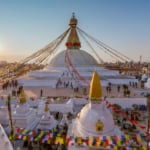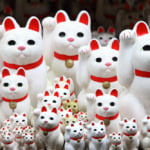Name: Mishima Taisha Shrine
Address: 2-1-15 Ōmiya-cho, Mishima City, Shizuoka Prefecture
Official/Related Website URL: http://www.mishimataisha.or.jp/
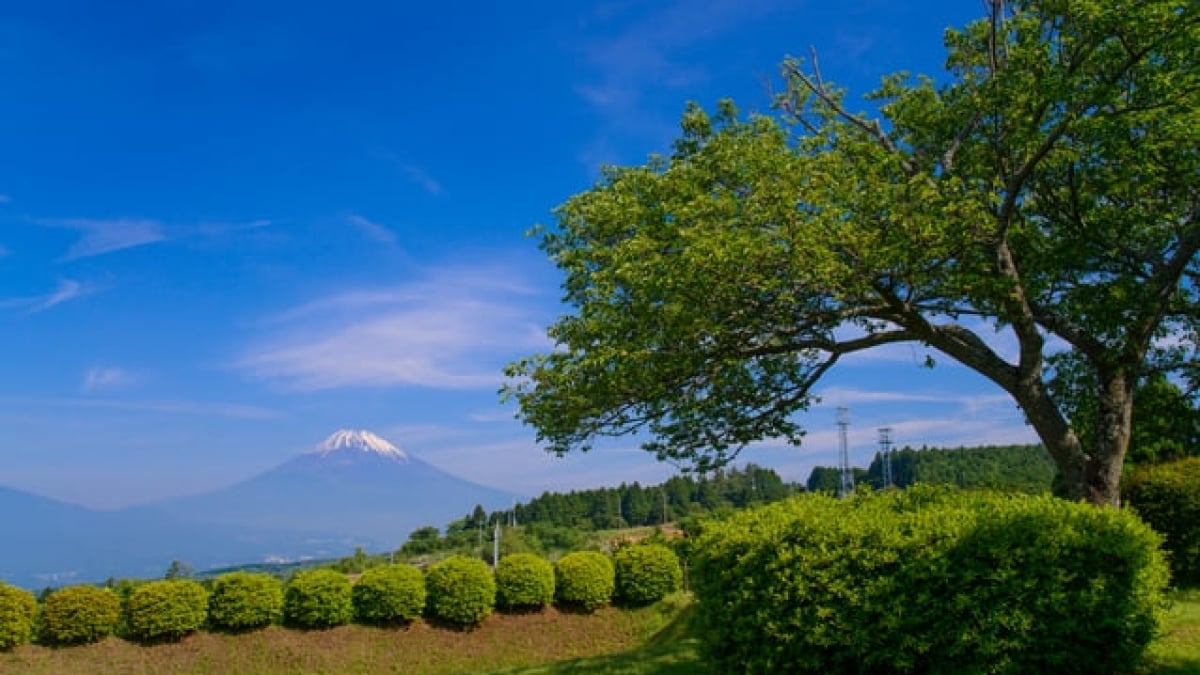
Introducing all of Mishima’s sightseeing spots at once! 38 historical and date spots
Mishima City is known as a key transportation hub in eastern Shizuoka Prefecture. While there are many famous tourist destinations in the surrounding areas, such as the Izu Peninsula and Hakone, Mishima City holds its own. Located at the foot of Mount Fuji and Mount Hakone, Mishima is also a place rich in historical landmarks. In addition to temples, shrines, and museums that exude a historical atmosphere, there are parks where you can enjoy the beauty of abundant water and stunning scenery. Here, we’ll introduce plenty of sightseeing spots in Mishima City.
table of contents
[x] close
Introducing all of Mishima’s sightseeing spots at once! 38 historical and date spots
- 1. Mishima Taisha Shrine
- 2. Enmyōji Temple “Grave of the Dutiful Dog”
- 3. Haraedo Shrine
- 4. Yūsenji Temple
- 5. Tamazawa Myōhokkeji Temple
- 6. Mishima Ryūzōji Temple
- 7. Mitsuishi Shrine
- 8. Sengen Shrine
- 9. Mishima Taisha Treasure Museum
- 10. Mishima Calendar Maker's House
- 11. Waterfront Literary Monuments (Mizukami Street)
- 12. Kotoba-kan, the Museum of Words by Nobuyuki Ōoka [Closed]
- 13. Sano Art Museum
- 14. Mishima City Local History Museum
- 15. Genbe River
- 16. Rakujuen Garden
- 17. Izu Fruit Park
- 18. Gingko Tree-lined Street on Nichidai Avenue
- 19. Hasunuma River (Prince Komatsu’s River)
- 20. Shirataki Park
- 21. Megumi no Ko
- 22. Home of the Mishima Baikamo
- 23. Mizu no Sono Green Space
- 24. Nakazato Warm Water Pond
- 25. Sakaigawa and Kiyozumi Green Space
- 26. Yamanaka Castle Ruins Park
- 27. Hakone Old Highway Stone Pavement
- 28. Mishima’s 36 Views of Mt. Fuji
- 29. Hydrangeas of Tsukahara Shinden
- 30. Gonjo Jizō Statue
- 31. Main Gate of the Higuchi Honjin (formerly in Mishima-juku)
- 32. Yoritomo and Masako’s Sitting Stones (Inside Mishima Taisha Grounds)
- 33. Heian-Kamakura Ancient Road
- 34. Ruins of Izu Kokubunji Pagoda
- 35. Matsunamiki Pine Tree Lined Road in Mishima
- 36. Kōyama Burial Mounds
- 37. Day Use Bathing at Takegura Onsen (Minakuchi-sō)
- 38. Mishima Skywalk
- ◎ Summary of Mishima's tourist attractions
1. Mishima Taisha Shrine
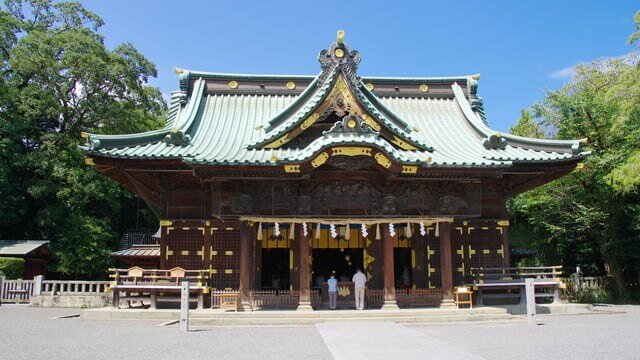
When one thinks of Mishima City, the first place that comes to mind is Mishima Taisha Shrine. The city of Mishima developed as a temple town centered around this shrine. To the east and west lie the old Tokaido Road and to the south, the old Shimoda Road, making it a transportation hub since ancient times. The name “Mishima” itself originates from this shrine, showing how it has long been the cultural heart of the region.
Mishima Taisha is a 7-minute walk from JR Mishima Station and is open for worship every day of the year (worship hours are from 8:30 AM to 5:00 PM). The shrine grounds are vast, making it a pleasant place to stroll and enjoy slowly. Its main and worship halls are designated Important Cultural Properties of Japan, offering significant historical value.
The main deity enshrined here is Ōyama-tsumi no Mikoto, the guardian of mountains, forests, and agriculture. The other deity, Tsumihayae Kotoshironushi no Kami, is a god of fortune and prosperity. In season, fragrant olives and cherry blossoms bloom abundantly, making it not only a historical destination but also a romantic spot, perfect for couples.
2. Enmyōji Temple “Grave of the Dutiful Dog”
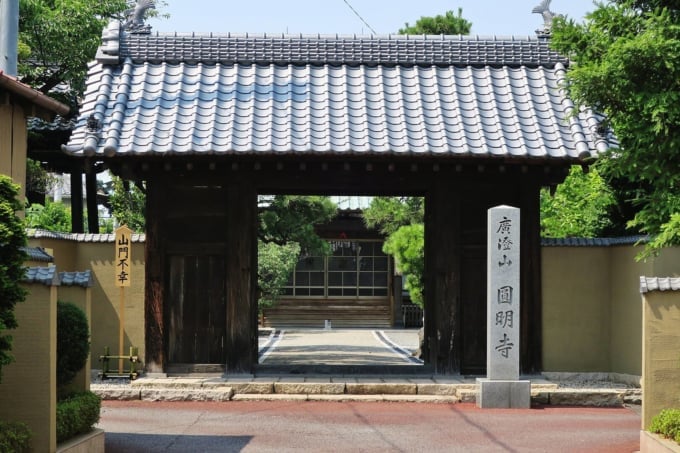
A Nichiren Buddhist temple located in Shibamoto-cho, Mishima City. Within the grounds is a rare tomb known as the “Grave of the Dutiful Dog.” It is said to have been built by the head priest of the time in honor of puppies who earnestly cared for their sick mother dog until the very end.
The story of five puppies who ventured into town in search of food for their mother, only to pass away after her death, is well known in Mishima. A memorial service is held every year on April 18 to pray for their souls. If you’re a dog lover, consider visiting during this time.
Name: Enmyōji Temple “Grave of the Dutiful Dog”
Address: 1-7 Shibamoto-cho, Mishima City, Shizuoka Prefecture
Official/Related Website URL: https://www.city.mishima.shizuoka.jp/ipn000291.html
3. Haraedo Shrine
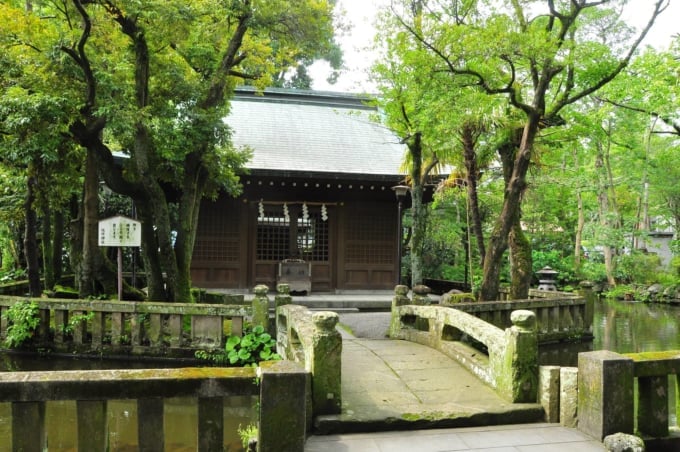
Haraedo Shrine is a purification shrine located to the west of Mishima Taisha. In Mishima, the Grand Purification Ceremony is held twice a year (at the end of June and December). It is said that sweeping the approach to the shrine with a broom as you walk will protect you from misfortune. As a purification ritual with deep history, not only local residents but also many tourists visit every year.
Name: Haraedo Shrine
Address: 2-1-5 Ōmiya-cho, Mishima City, Shizuoka Prefecture
4. Yūsenji Temple
Yūsenji Temple has existed since the Nara period and is currently affiliated with the Rinzai school of Zen Buddhism. It was originally called “Daikōji” and built as a substitute provincial convent for Mishima. The central foundation stone of its original pagoda is still carefully preserved today and is a valuable artifact for understanding the era.
It is designated as an Important Cultural Property of Mishima City. Due to its historical value, it is listed as a sightseeing spot. Events like festivals and floating lantern ceremonies are held seasonally, making it a beloved landmark for both tourists and locals.
Name: Yūsenji Temple
Address: 5-13 Taisha-cho, Mishima City, Shizuoka Prefecture
Official/Related Website URL: http://yuusen.g1.xrea.com/
5. Tamazawa Myōhokkeji Temple
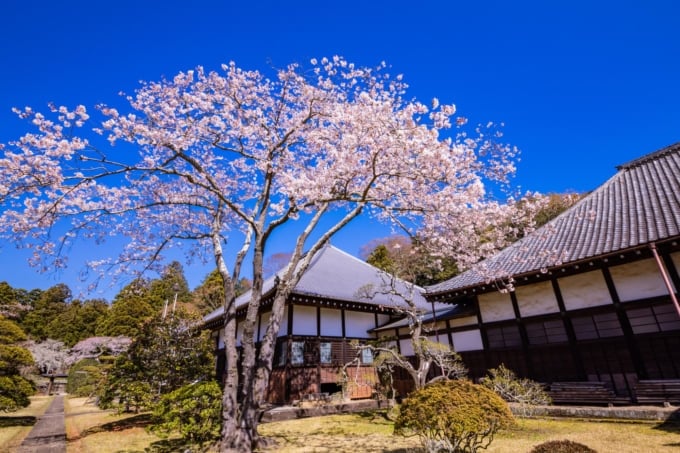
Originally located in Izu, it was relocated to its current site in Tamazawa, Mishima City during the Edo period. It is said that the move was made possible thanks to the efforts of Oman, a follower of Nichiren Buddhism and a concubine of Tokugawa Ieyasu. The temple is not only historically significant but also renowned as a sightseeing spot due to its gardens, ideal for flower viewing.
The dignified grounds are surrounded by ancient cedar trees, and the gardens feature cherry blossoms in spring and vivid autumn foliage—offering classic Japanese scenery to enjoy. Grand festivals held in spring, summer, and autumn attract numerous worshippers every year, including many tourists.
Name: Tamazawa Myōhokkeji Temple
Address: 1 Tamazawa, Mishima City, Shizuoka Prefecture
Official/Related Website URL: http://www.myouhokkeji.jp/
6. Mishima Ryūzōji Temple
Zen Master Hakuin Ekaku is a renowned religious figure not only in Mishima City but throughout Shizuoka Prefecture. Due to his fame and virtuous character, even visitors from overseas come to pay their respects. As a Zen training temple, it is known not only as a sightseeing destination but also as a place for spiritual discipline in Mishima City.
Every year on November 23, the Kōyō Festival is held at Ryūzōji Temple, during which paintings, calligraphy, and other treasures housed in the temple are aired out. As these are all valuable items, many visitors gather each year just to catch a glimpse. During the flowering seasons, the grounds are also adorned with stunning displays of autumn leaves and azaleas, making it a popular spot for flower viewing.
Name: Mishima Ryūzōji Temple
Address: 326 Sawaji, Mishima City, Shizuoka Prefecture
7. Mitsuishi Shrine
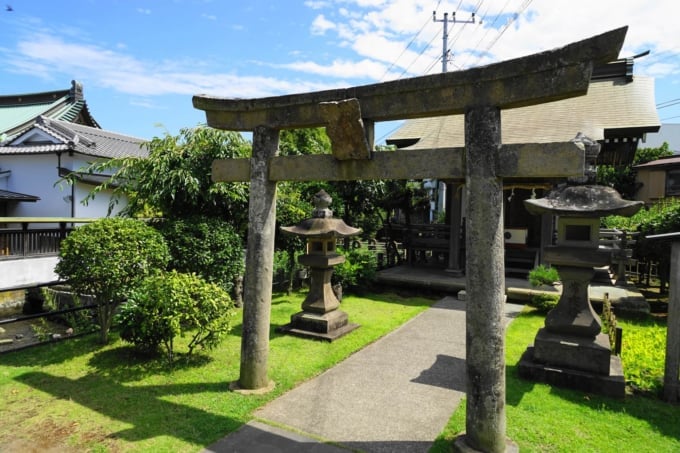
Mitsuishi Shrine is located near Genbe River. In addition to its rich natural surroundings, the shrine grounds feature a historic artifact known as the "Bell of Time." This bell once played a vital role in announcing the time to the lodging area, symbolizing the historical importance of Mitsuishi Shrine. The name is said to originate from a tale in which the shrine was built atop a giant rock bearing the same name.
Name: Mitsuishi Shrine
Address: 13-1 Hirokōji-cho, Mishima City, Shizuoka Prefecture
Official/Related Website URL: https://www.mishima-kankou.com/spot/4433/
8. Sengen Shrine
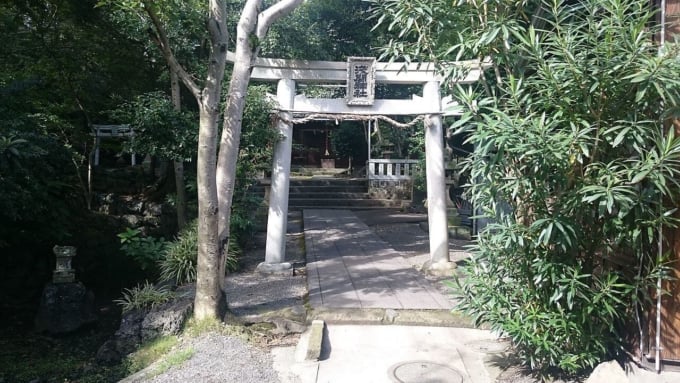
This venerable shrine has a legend that when Mount Fuji erupted long ago, the lava flow stopped right in front of its gate. Originally, it was a branch shrine of Mishima Taisha. Due to this legend, many people used to visit and pray here before climbing Mount Fuji. Although that custom no longer remains in modern Mishima City, the shrine’s historical significance still makes it worth a visit.
Name: Sengen Shrine
Address: 6-3 Shibamoto-cho, Mishima City, Shizuoka Prefecture
Official/Related Website URL: https://www.surugawan.net/guide/726.html
9. Mishima Taisha Treasure Museum
As its name suggests, the museum houses many culturally and historically valuable artifacts. Among the treasures related to Mishima Taisha—an iconic symbol of Mishima City—are items such as the only surviving letter written by Minamoto no Yoritomo and a meticulously crafted replica of the national treasure “Plum-Lacquered Cosmetic Box” said to have been offered by Hōjō Masako.
In addition, the museum preserves swords, ancient documents, and many other valuable cultural assets. Whether you're a history enthusiast or not, it’s a destination worth visiting to explore Mishima’s history and rare treasures from the Heian period. During the Mishima Taisha Annual Grand Festival in mid-August, the museum extends its opening hours, allowing for an even longer and more enjoyable visit.
Name: Mishima Taisha Treasure Museum
Address: 2-1-15 Ōmiya-cho, Mishima City, Shizuoka Prefecture
Official/Related Website URL: http://mishimataisha.or.jp/treasure/
10. Mishima Calendar Maker's House
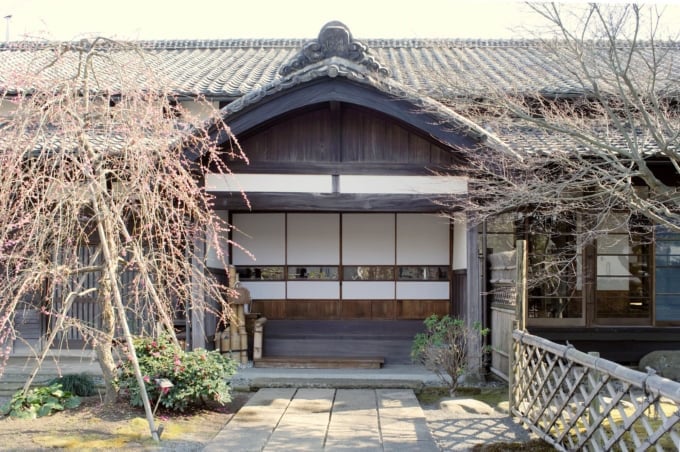
It may be an unfamiliar term, but the "Mishima Calendar" is a legitimate type of calendar, just like the solar calendar. Said to be the oldest example written in kana characters in Japan, its historical value is evident. In this museum, you can view old calendars, scrolls, and other items associated with the Mishima Calendar, and even purchase modern calendars inspired by it. Packed with materials about the Mishima Calendar, this house attracts visitors from outside Mishima City every year.
Name: Mishima Calendar Maker's House
Address: 2-5-17 Ōmiya-cho, Mishima City, Shizuoka Prefecture
Official/Related Website URL: https://www.mishima-kankou.com/spot/290/
11. Waterfront Literary Monuments (Mizukami Street)
When thinking of art appreciation, museums and galleries may come to mind, but these literary monuments are places you can enjoy at a leisurely pace while strolling. Along Mizukami Street in Mishima City, there are numerous literary monuments inscribed with writings and haiku from renowned literary figures. You can encounter the words of great authors like Osamu Dazai, Bokusui Wakayama, and Yasushi Inoue.
Seasonal plants bloom along the street, allowing you to enjoy beautiful scenery while walking. Currently, willow trees have been planted, and surprisingly, the beautiful landscape is maintained by volunteers. Thanks to them, travelers can enjoy sightseeing on a budget, which is a welcome bonus.
Name: Waterfront Literary Monuments (Mizukami Street)
Address: 1-28 Ichibancho, Mishima City, Shizuoka Prefecture
Official/Related Website URL: https://www.mishima-kankou.com/spot/293/
12. Kotoba-kan, the Museum of Words by Nobuyuki Ōoka [Closed]
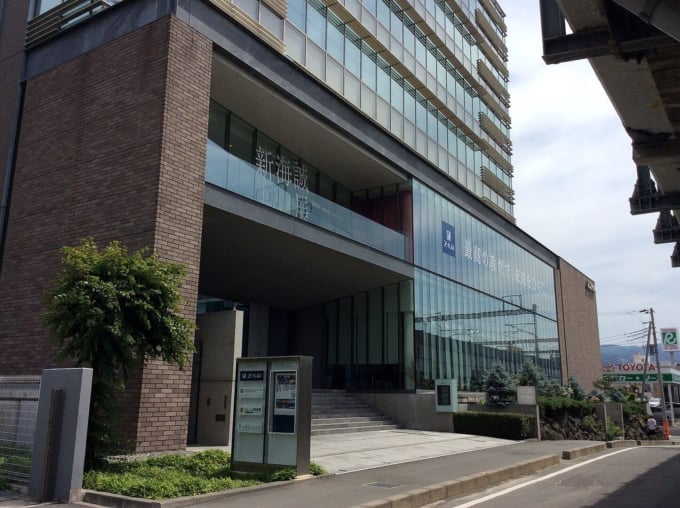
Even if you're not from Mishima City, you may have heard of the poet Nobuyuki Ōoka. Naturally, his memorial museum is located in Mishima, his hometown. Inspired by the concept of a literary museum, it was created under the motto “A museum to play with and learn through words.” Here, “words” doesn’t just mean language—it includes music, dance, and all forms of communication between people.
We naturally communicate with those around us, but how valuable and meaningful are each of our words and gestures? This museum preserves the philosophy and beliefs of Nobuyuki Ōoka, who lived his life as a writer cherishing these very connections. It is a perfect museum to visit with children and is popular among families as a sightseeing destination.
Closed on November 26, 2017.
Name: Kotoba-kan, the Museum of Words by Nobuyuki Ōoka
Address: 1-9-11 Bunkyōchō, Mishima City, Shizuoka Prefecture, Z-kai Bunkyōchō Building 1F/2F
13. Sano Art Museum
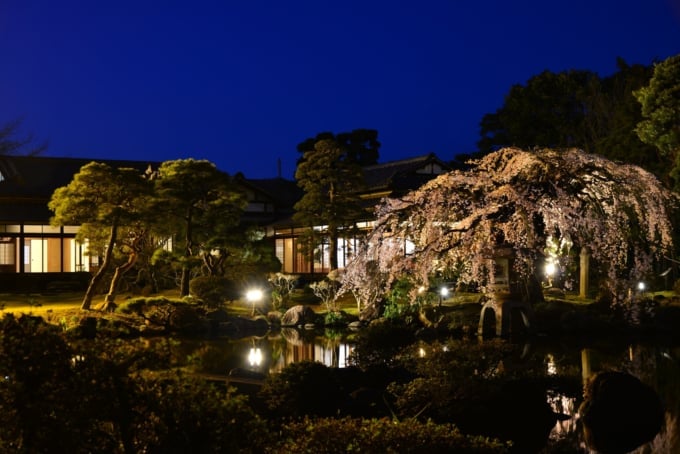
This museum was established through the donation of Takakazu Sano, a representative businessman of the Showa era and a native of Mishima City. Known for his words, “Because no one else dares to, that’s exactly where the opportunity lies,” he broke free from conventional thinking from childhood and pioneered many original developments, greatly contributing to the advancement of Japanese industry.
Sano had a lifelong passion for appreciating fine art. He collected antiques he favored and displayed them at home, often drawing inspiration for new ideas from them. The artworks he collected as a hobby and part of his life are now preserved in this museum.
Among them, the Japanese sword collection is especially famous. As Japanese swords are being reevaluated today, the museum is a must-visit for new fans of the craft. The strolling garden on the premises has also been registered as a Tangible Cultural Property of Japan, making it a worthwhile destination for enjoying beautiful scenery. Incidentally, from November 12, 2016, to February, a Japanese sword exhibition was held, offering deep insight into the beauty and cultural richness of Japanese life and aesthetics through the sword.
Name: Sano Art Museum
Address: 1-43 Nakata-chō, Mishima City, Shizuoka Prefecture
Official/Related Website URL: https://www.sanobi.or.jp/
14. Mishima City Local History Museum
If you’re traveling, you’ll want to fully enjoy the local culture. The Mishima City Local History Museum meets that desire by offering many exhibits unique to the area. These include records of battles fought by famous Sengoku warlords and the evolving traditions of festivals held in Mishima City.
In addition to its appeal as a museum, it offers workshops such as making magatama beads and dyeing experiences. Recently, events like observing lava and fossils in Rakujū-en Garden are also held regularly, entertaining even for adults.
Name: Mishima City Local History Museum
Address: 19-3 Ichibangai, Mishima City, Shizuoka Prefecture
Official/Related Website URL: http://www.city.mishima.shizuoka.jp/kyoudo/
15. Genbe River
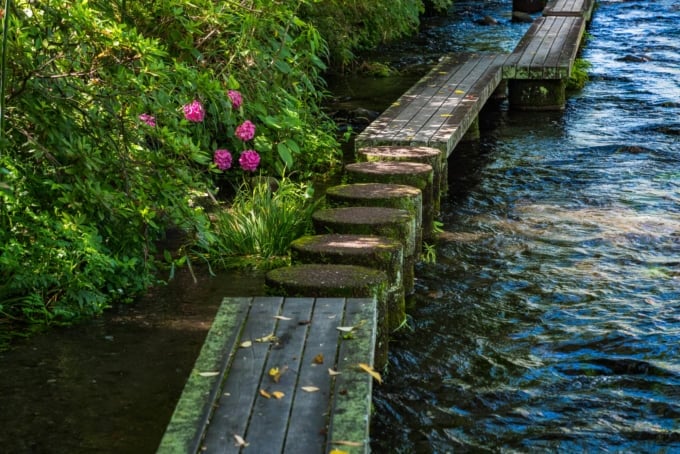
Located near Mishima Taisha, Genbe River is one of the most famous rivers in Mishima City. Its clear stream is fed by spring water from Mt. Fuji and is considered a symbolic feature of the city, alongside Mishima Taisha. The shallow river stretches about 1.5 kilometers and has a gentle flow that soothes those who see it.
In addition to the beautiful natural scenery, fireflies can be seen in summer. As it’s increasingly rare to spot fireflies these days, many tourists consider it a must-see during the warmer months. The river is just a few minutes' walk from the station, making it easily accessible.
Because of its shallow water, you can also wade and play in the river during summer. The riverside paths are well-maintained, allowing visitors to enjoy the landscape while walking. It’s an ideal spot for a relaxing stroll.
Name: Genbe River
Address: Shibamoto-chō, Mishima City, Shizuoka Prefecture
Official/Related Website URL: https://www.mishima-kankou.com/spot/287/
16. Rakujuen Garden
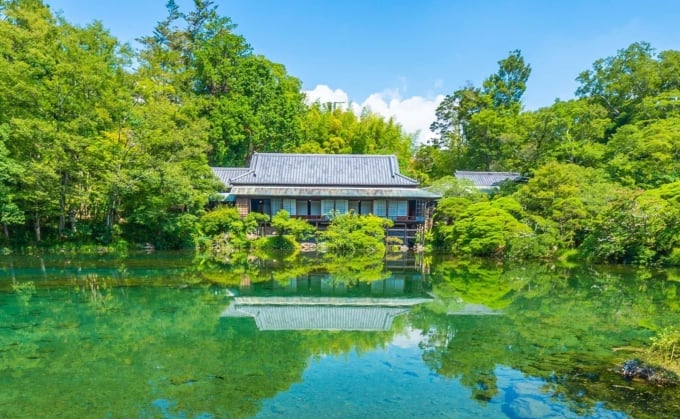
Located close to Mishima Station, Rakujuen Garden is proud of its beautiful Kohama Pond, blessed by the spring water from Mount Fuji. The garden's scenery is spectacular, especially known for its dazzling chrysanthemum blooms. During the Chrysanthemum Festival held in autumn, over 6,000 colorful chrysanthemums are displayed throughout the garden, creating an indescribable beauty.
For travelers looking to enjoy nature to the fullest, this is an ideal destination. The garden also features a “Petting Zoo Area,” popular especially among families with children.
Name: Rakujuen Garden
Address: 19-3 Ichibangai, Mishima City, Shizuoka Prefecture
Official/Related Website URL: https://www.city.mishima.shizuoka.jp/rakujyu/index.html
17. Izu Fruit Park
At Izu Fruit Park in Mishima City, you can pick fruits like melons—which are rarely available elsewhere—as well as strawberries and mandarins. The park also offers unique experiences such as tours of a cheesecake workshop and a shrimp cracker factory, making it a one-of-a-kind sightseeing spot.
Open every day of the year, though the best fruit-picking seasons vary by type, so it’s best to check in advance before visiting.
Name: Izu Fruit Park
Address: 181-1 Tsukahara Shinden, Mishima City, Shizuoka Prefecture
Official/Related Website URL: http://www.izupa.orepa.jp/
18. Gingko Tree-lined Street on Nichidai Avenue
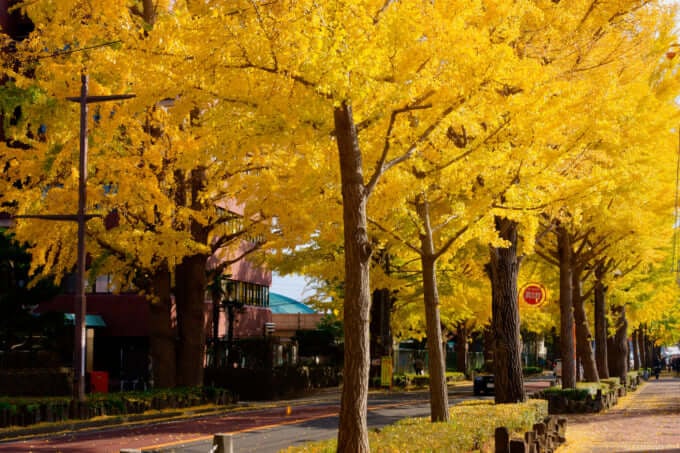
Autumn is synonymous with colorful foliage, and the ginkgo trees along Nichidai Avenue offer a perfect way to enjoy that seasonal beauty. Once the site of an army field artillery regiment, the area now hosts schools affiliated with Nihon University. In autumn, the ginkgo trees along this street showcase magnificent yellow leaves.
Only a 6-minute walk from Mishima Station, it’s a pleasant stroll even during sightseeing. From peak coloring in autumn to mid-November when the leaves begin to fall, you can fully savor the charm of nature gracing the town.
Name: Gingko Tree-lined Street on Nichidai Avenue
Address: Bunkyōchō, Mishima City, Shizuoka Prefecture
Official/Related Website URL: https://www.mishima-kankou.com/spot/452/
19. Hasunuma River (Prince Komatsu’s River)
“Prince Komatsu” refers to Prince Komatsu Akihito, a prominent figure during the Meiji Restoration and former president of both the Japanese Red Cross Society and the Great Japan Fisheries Association. The name of the river originates from his former villa in the area. As a result, remnants such as fountains, waterwheels, and gas lamps reminiscent of that era still remain along the river.
Since the river originates from Kohama Pond in Rakujuen, the water is naturally beautiful. The fact that koi fish live in the river further exemplifies why Mishima City is known as the “City of Water.” Its tranquil atmosphere also makes it an excellent spot for a stroll.
Name: Hasunuma River
Address: Izumi-chō, Mishima City, Shizuoka Prefecture
Official/Related Website URL: https://www.city.mishima.shizuoka.jp/ipn012962.html
20. Shirataki Park
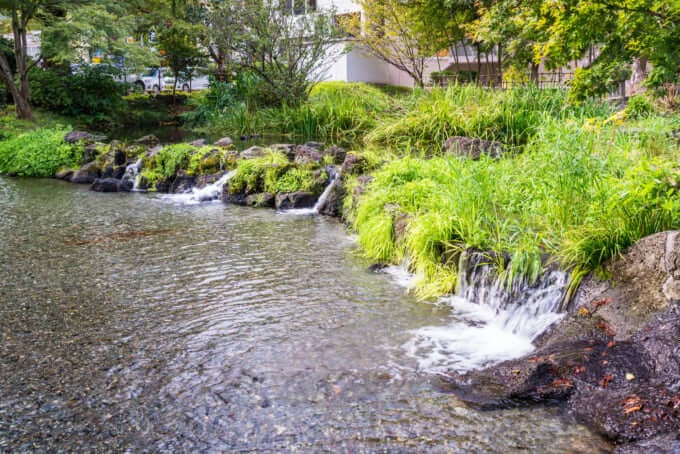
Mishima City is the City of Water. Enjoying its elegant murmuring streams and the nature born from water is one of the real joys of sightseeing here. But to be honest, many visitors simply want to taste that beautiful spring water. For such people, Shirataki Park in Mishima City is highly recommended.
This park, where you can drink spring water from Mount Fuji, is a beloved local relaxation spot and clearly shows the blessings that the water brings. Being relatively close to the foot of Mount Fuji, you can even see lava flows that were created by past eruptions of the mountain.
Name: Shirataki Park
Address: 1-1 Ichibangai, Mishima City, Shizuoka Prefecture
Official/Related Website URL: https://www.mishima-kankou.com/spot/480/
21. Megumi no Ko
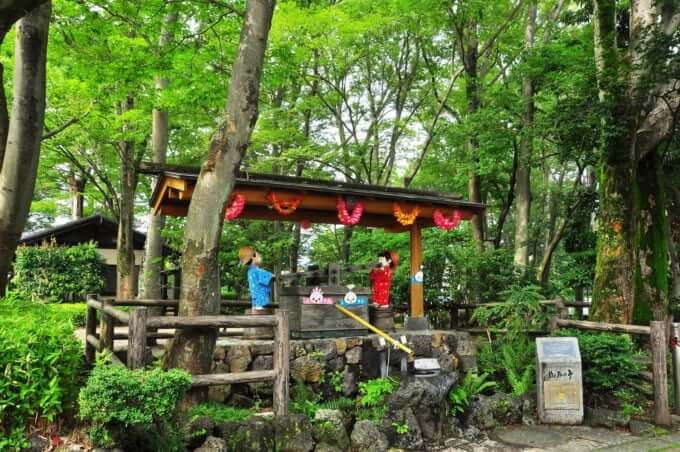
Located at the entrance of Shirataki Park is “Megumi no Ko.” In essence, it's a statue, but it is set in front of a well and humorously designed to actually pump water. One charming feature is that its clothing changes with the seasons—an amusing detail that brings joy to both tourists and locals of Mishima City. Of course, the water it pumps up is drinkable.
Name: Megumi no Ko
Address: 1-1-1 Ōmiya-chō, Mishima City, Shizuoka Prefecture
Official/Related Website URL: https://www.mishima-kankou.com/spot/448/
22. Home of the Mishima Baikamo
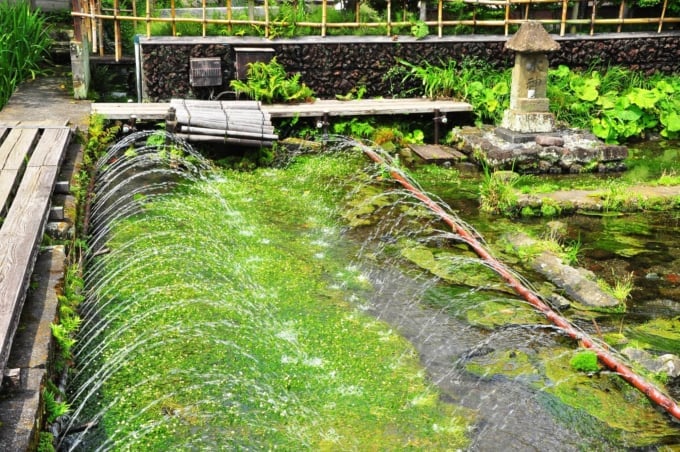
The Mishima Baikamo is a type of aquatic flower native to Mishima City. At one point, due to decreased spring water and deteriorating water quality, its numbers sharply declined. The city of Mishima has since invested considerable effort in restoring its habitat. This site serves not only as a tourist attraction but also as a sanctuary to protect the flower’s ecosystem.
Efforts are ongoing to transplant the Baikamo cultivated here into locations such as the Genbe River to help restore the population. This aquatic plant blooms beautifully in the summer and, despite being underwater, offers a unique flower-viewing experience, making it a distinctive sightseeing destination.
Name: Home of the Mishima Baikamo
Address: Minamihon-chō, Mishima City, Shizuoka Prefecture
Official/Related Website URL: https://www.mishima-kankou.com/spot/447/
23. Mizu no Sono Green Space
Walking along the Genbe River path, about halfway through, you'll come upon this park. It’s more of a relaxation spot than a formal tourist site, but from May to June, you can also spot fireflies. With benches and drinking fountains available, it’s not just a sightseeing spot but also a perfect rest area while strolling along the Genbe River.
Name: Mizu no Sono Green Space
Address: Midori-chō, Mishima City, Shizuoka Prefecture
Official/Related Website URL: https://www.city.mishima.shizuoka.jp/websystem/kouen/kouen_syousai000053.html
24. Nakazato Warm Water Pond
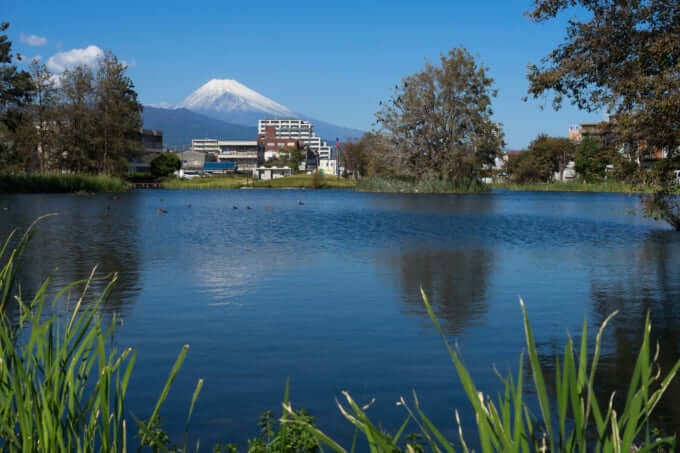
In Mishima City, there exists a somewhat unfamiliar feature—a warm water pond. Why is it warmed? It’s used as irrigation water for rice paddies. Though it's called “warm,” it's not hot like a hot spring, and fish still live in the pond, making it far more natural and serene than the name might suggest.
Nakazato Warm Water Pond is located at the foot of Mount Fuji, and on clear days, the mountain’s reflection can be seen on the water’s surface. For those who enjoy photographing scenic spots during their travels, this is an ideal location.
Name: Nakazato Warm Water Pond
Address: 5-38 Tomita-chō, Mishima City, Shizuoka Prefecture
Official/Related Website URL: https://www.city.mishima.shizuoka.jp/mishima_info/fureai/shosai06.html
25. Sakaigawa and Kiyozumi Green Space
Where there is abundant water, nature thrives—and nowhere is that more evident than at Sakaigawa and Kiyozumi Green Space in Mishima City. Though technically within the city limits, this area is home to rich nature and a wide variety of wildlife. With spring water points scattered throughout, even first-time visitors will find it an enjoyable place to explore.
Name: Kiyozumi Green Space (Sakaigawa and Kiyozumi Green Space)
Address: Kiyozumi-chō, Mishima City, Shizuoka Prefecture
Official/Related Website URL: https://www.city.mishima.shizuoka.jp/ipn044681.html
26. Yamanaka Castle Ruins Park
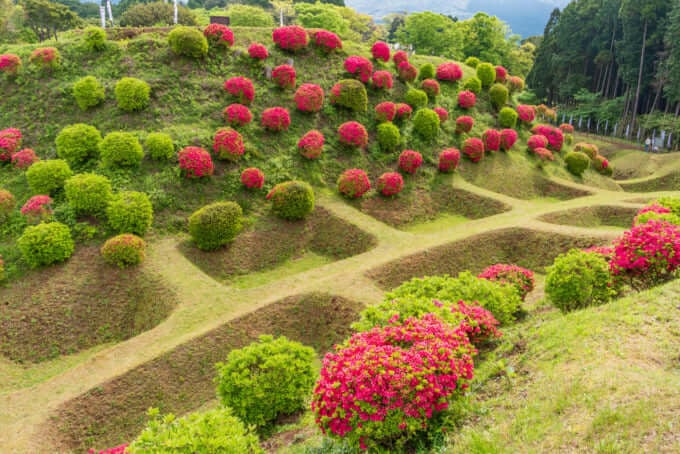
Yamanaka Castle is known for its uniquely designed moats called "shoji-bori," a rare feature in mountain castles. The fact that these moats also serve as water reservoirs reflects the distinct characteristics of Mishima City. It’s recommended not only for castle enthusiasts but also for those who wish to enjoy the harmony between beautiful nature and historical structures.
Name: Yamanaka Castle Ruins Park
Address: Yamanaka Shinden, Mishima City, Shizuoka Prefecture
Official/Related Website URL: https://www.mishima-kankou.com/spot/282/
27. Hakone Old Highway Stone Pavement
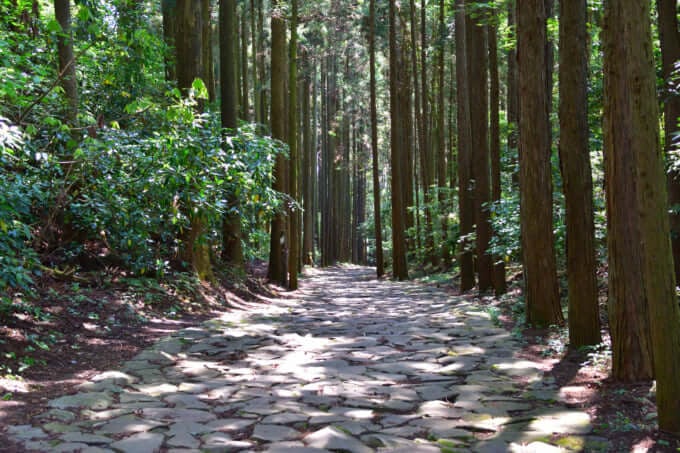
Hakone often brings to mind the famous relay marathon, but it also reminds us of how grueling travel along the Tōkaidō route was for travelers in the Edo period. This stone pavement retains the atmosphere of that time and is said to have been paved to ease the burden of those traveling between Mishima and Odawara. Today, combined with the rich natural surroundings, it makes for an ideal walking and sightseeing destination. You can stroll leisurely while imagining the lives of travelers from the past.
Name: Hakone Old Highway Stone Pavement
Address: Sasahara Shinden, Mishima City, Shizuoka Prefecture
Official/Related Website URL: https://www.city.mishima.shizuoka.jp/ipn032437.html
28. Mishima’s 36 Views of Mt. Fuji
When Mt. Fuji was designated as a World Cultural Heritage Site, Mishima City collected public submissions from citizens for “the most beautiful views of Mt. Fuji.” These 36 selected views make up this list. For photography enthusiasts visiting the area, this is invaluable information.
From the old Hakone Highway and Shikkodaira in the north to Misono and the Shinshiro Bridge in the south, Mt. Fuji reveals many different faces depending on the angle and season. If you’re planning to see or photograph Mt. Fuji during your trip, it’s worth checking these views beforehand.
Name: Mishima’s 36 Views of Mt. Fuji
Address: Mishima City, Shizuoka Prefecture
Official/Related Website URL: http://www.mishima-kankou.com/feature/1731/
29. Hydrangeas of Tsukahara Shinden
With over 40 varieties and more than 800 plants, this hydrangea field is truly overwhelming. While hydrangeas can be seen in places other than Mishima City, this level of stunning beauty and scale is rare. If you're someone who wants to fully enjoy nature, this spot is definitely worth visiting.
Name: Hydrangeas of Tsukahara Shinden
Address: Tsukahara Shinden, Mishima City, Shizuoka Prefecture
Official/Related Website URL: https://www.city.mishima.shizuoka.jp/miryoku/smart/04/info009.html
30. Gonjo Jizō Statue
During the Edo period, commoners who crossed in front of a daimyo's procession during their mandated trips to Edo (sankin-kōtai) were often executed without mercy. Such a tragic incident is said to have occurred in Mishima City, where a 6-year-old girl named Okiku met that fate. The townspeople, grieving her loss, created this Gonjo Jizō in her memory. It is now known as a historic site that reflects the societal conditions of the sankin-kōtai system.
Name: Gonjo Jizō Statue
Address: 1 Higashihonchō, Mishima City, Shizuoka Prefecture
Official/Related Website URL: https://www.city.mishima.shizuoka.jp/ipn000319.html
31. Main Gate of the Higuchi Honjin (formerly in Mishima-juku)
Mishima-juku was the 11th post station along the Tōkaidō. The main gate of the Higuchi Honjin, a former official inn, still remains. At the time, the Tōkaidō was a critically important communication route, and you can feel the historical significance standing before this gate. It is now used as the main gate of Enmyōji Temple, and if you’re visiting Mishima City, it’s well worth seeing.
Name: Main Gate of the Higuchi Honjin
Address: 1-7 Shibamoto-chō, Mishima City, Shizuoka Prefecture
Official/Related Website URL: https://www.city.mishima.shizuoka.jp/kakukaHP_system_kanrika/syashsin_rekishi/v31.htm
32. Yoritomo and Masako’s Sitting Stones (Inside Mishima Taisha Grounds)
Two stones, one large and one small, are placed within the shrine grounds. As the name suggests, these stones are said to be where Minamoto no Yoritomo and Hōjō Masako once sat. It is believed they used them to rest while visiting Mishima Taisha. While these may not be officially recognized cultural properties, they do invite you to imagine the historical scenery of that time.
From a historical perspective, these stones help illustrate Mishima City’s significance during that period. Be sure to see them during your visit.
Name: Mishima Taisha
Address: 2-1-5 Ōmiya-chō, Mishima City, Shizuoka Prefecture
Official/Related Website URL: http://www.mishimataisha.or.jp/precinct/
33. Heian-Kamakura Ancient Road
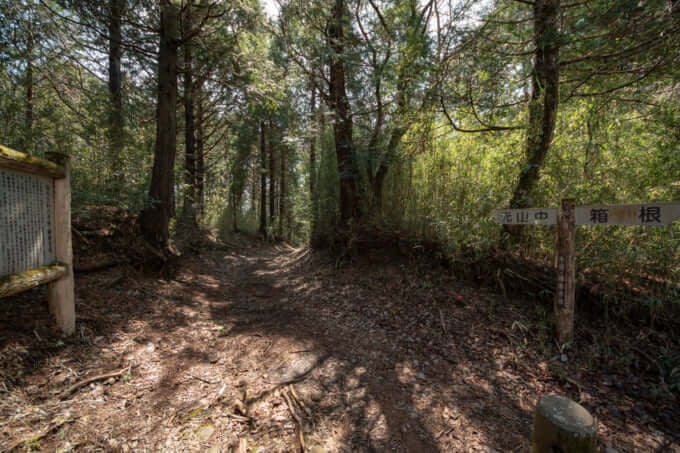
An older road than the Hakone Old Highway, it is said to have opened as a route after an eruption of Mt. Fuji. While people did use it at the time, it is now said to be relatively difficult to ascend from the Mishima side. Historically, it also served as a military road, and its use in troop movements is recorded in the "Izayoi Nikki" (The Diary of the Sixteenth Night).
Name: Heian-Kamakura Ancient Road
Address: Mishima City, Shizuoka Prefecture
Official/Related Website URL: https://www.city.mishima.shizuoka.jp/ipn032433.html
34. Ruins of Izu Kokubunji Pagoda
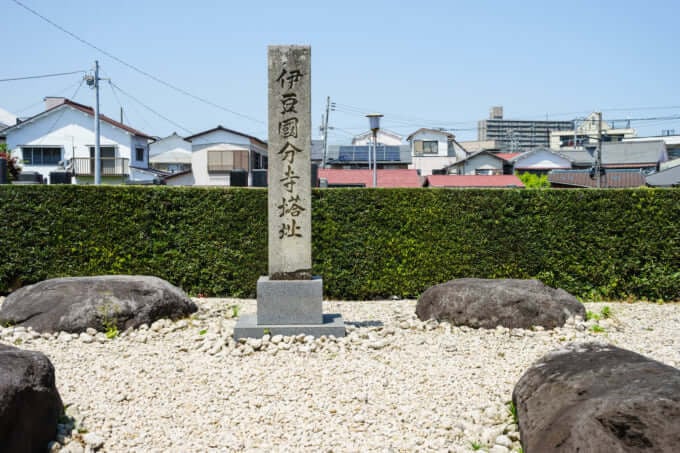
Not the present-day Izu Kokubunji, but the site of the earlier temple built in Mishima City before being relocated during the Nara period. Within the grounds, eight stones remain that are believed to be part of the original structure, giving a tangible sense of history. Since kokubunji temples were of great importance during the Nara and Heian periods, this site is well worth a visit.
Name: Izu Kokubunji
Address: 12-31 Izumigai, Mishima City, Shizuoka Prefecture
Official/Related Website URL: http://temple.nichiren.or.jp/2051004-izukokubunji/
35. Matsunamiki Pine Tree Lined Road in Mishima
Trees planted along highways served as landmarks to help travelers avoid losing their way. The Matsunamiki in Mishima is said to have served that purpose. In summer, it also provided shade where people could rest. As one of the remaining pine-lined paths in Mishima City, this avenue gives us a sense of the sentiments and practicalities experienced by travelers of the past.
Name: Matsunamiki Pine Tree Lined Road in Mishima
Address: Mishima City, Shizuoka Prefecture
Official/Related Website URL: https://www.city.mishima.shizuoka.jp/ipn045761.html
36. Kōyama Burial Mounds
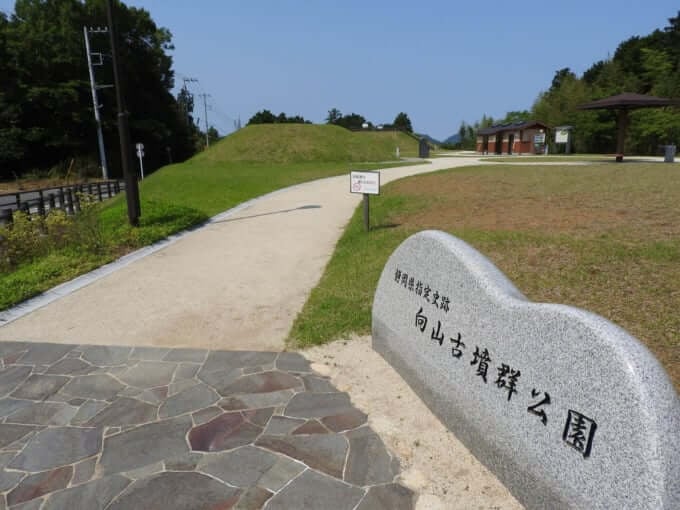
Located on a hill with a panoramic view of areas outside Mishima City and Mt. Fuji, this group of burial mounds was discovered during the construction of an elementary school in the Showa era. Artifacts such as iron swords and tools, believed to date from the late 5th to early 6th century, were excavated. Burial mounds are preserved for their cultural value throughout Japan, and the same is true in Mishima. This site remains popular as both a historical attraction and a sightseeing destination.
Name: Kōyama Burial Mounds
Address: 688-33 Yata, Mishima City, Shizuoka Prefecture
Official/Related Website URL: https://www.city.mishima.shizuoka.jp/ipn032385.html
37. Day Use Bathing at Takegura Onsen (Minakuchi-sō)
When it comes to hot springs in Shizuoka, areas like Izu and Hakone are probably more famous. However, Mishima City also offers a wonderful hot spring worth visiting. The city’s pristine water enhances the bathing experience, wrapping bathers in its gentle quality and leaving skin soft and moisturized.
Takegura Onsen has a long tradition dating back to 1935. Its distinctive "red water," rich in iron content, is said to benefit stiffness, pain, and beauty. While accommodations are not available, it’s a great stop for a relaxing bath after sightseeing.
Name: Takegura Onsen “Minakuchi-sō”
Address: 21 Takegura, Mishima City, Shizuoka Prefecture
Official/Related Website URL: https://www.mishima-kankou.com/spot/1527/
38. Mishima Skywalk
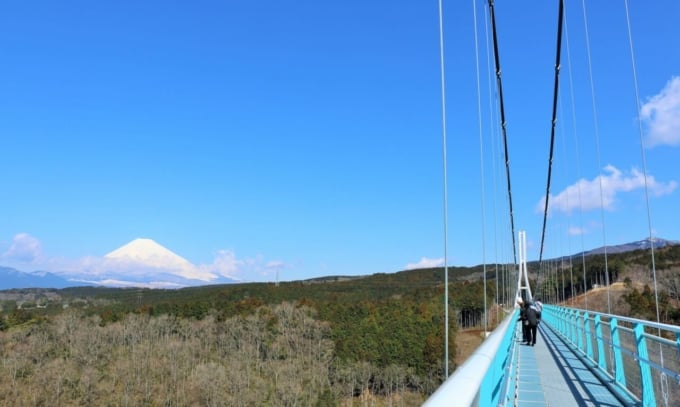
This is a newly constructed sightseeing attraction. At approximately 400 meters in length, it is the longest pedestrian suspension bridge in Japan. Although a fee is required to cross, on clear days, you can enjoy panoramic views of Mt. Fuji from the bridge or take spectacular photos of Mt. Fuji with the bridge in the foreground, providing a fresh and unique perspective.
Originally, the area of Sasahara Shinden in Mishima City was already known as a great scenic spot with wide views including Mt. Fuji. However, due to la ack of facilities, this beautiful area was seldom visited, even by locals. Feeling this was a missed opportunity, the city decided to build Mishima Skywalk to make the natural scenery more accessible and enjoyable.
Name: Mishima Skywalk
Address: 313 Sasahara Shinden, Mishima City, Shizuoka Prefecture
Official/Related Website URL: https://mishima-skywalk.jp/
◎ Summary of Mishima's tourist attractions
Mishima City is defined by its abundant natural spring water, which creates scenic beauty throughout the area. Its location at the foot of Mt. Fuji and its historical role as an important hub for travel and pilgrimage only add to its richness. This multilayered charm—natural and historical—is what makes Mishima so attractive. If you have the chance to visit, be sure to fully enjoy the fusion of nature and history.
For first-time visitors to Mishima, it's recommended to first stop by the Mishima City Tourist Association, located about five minutes on foot from the south exit of Mishima Station. There, you can pick up brochures and ask for advice on how to explore the area.
RELATED ARTICLES
REGIONS
CATEGORIES
FEATURED ON Shizuoka
-
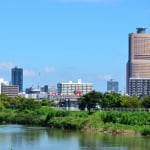
Here are some of the top tourist attractions in Hamamatsu City, known as the “City of Industry”!
-
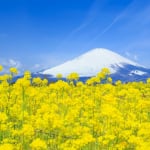
You Can See Mt. Fuji Anywhere You Go! Recommended Sightseeing Spots in Gotemba City at the Foot of the Famous Peak
-
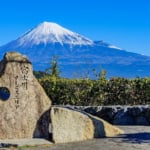
Introducing the highlights of the Fujikawa Service Area (Tomei Expressway)!
-
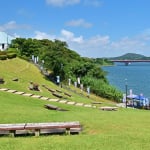
Introducing the Highlights of the Hamamatsu Lake Service Area (on the Tomei Expressway)
-
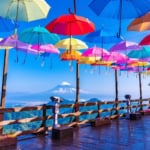
Top 5 Recommended Tourist Attractions in Izunokuni City, Famous for the World Heritage Site – Nirayama Reverberatory Furnace
MOST POPULAR ON Shizuoka
-
 1
1Doha: Must-see Attractions in the Capital of Qatar
-
 2
2Toronto: 10 Things to do in this Picturesque Canadian City
-
 3
3Amarillo: A City Famous for It’s Amazing Canyons, Great History and Music
-
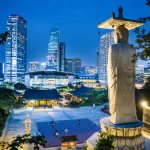 4
4South Korea: Dazzling Scenery, Rich Culture and Fascinating History
-
 5
5Kuwait: A Country in Middle East Asia Famous for Hot Sand Dunes and Stunning Cityscape

